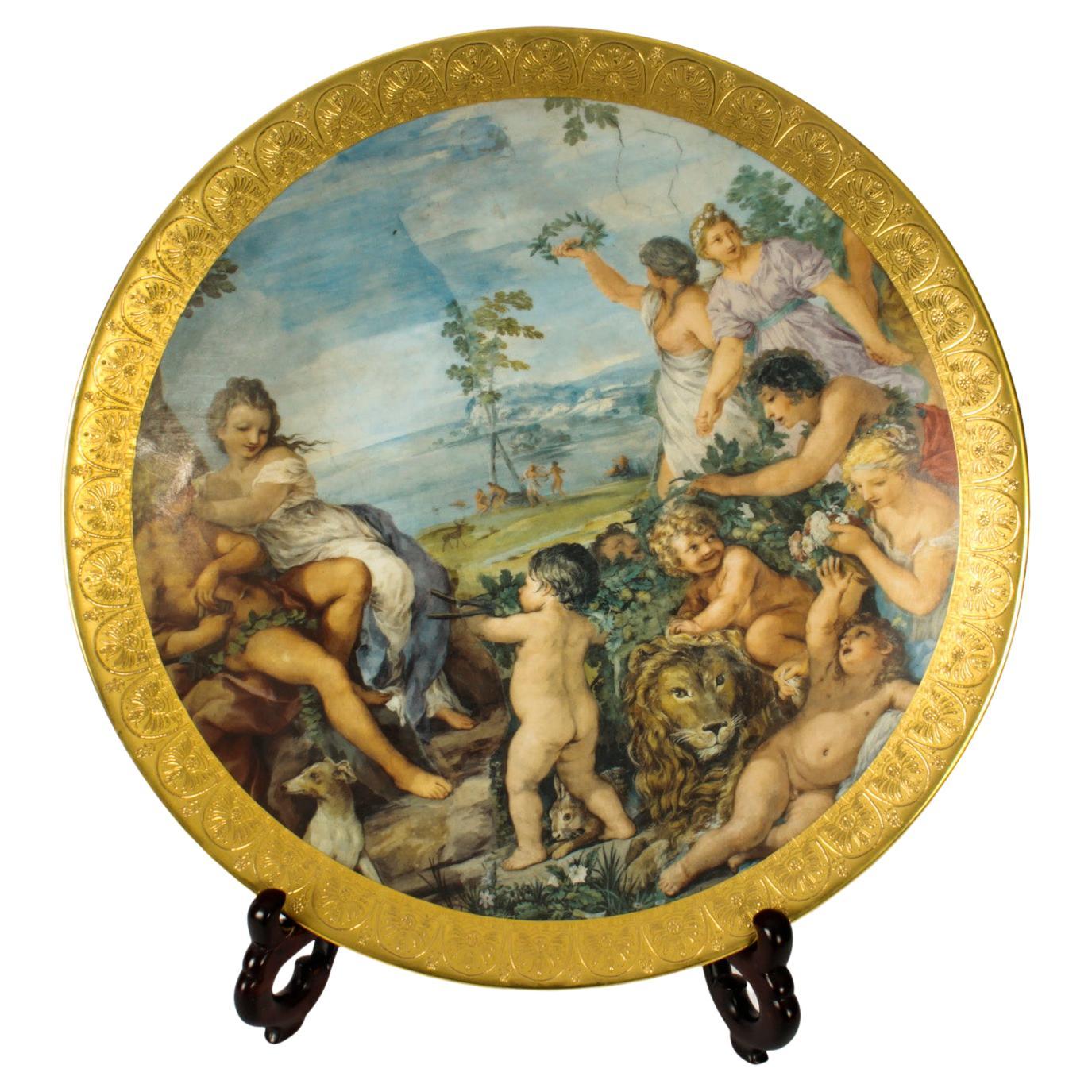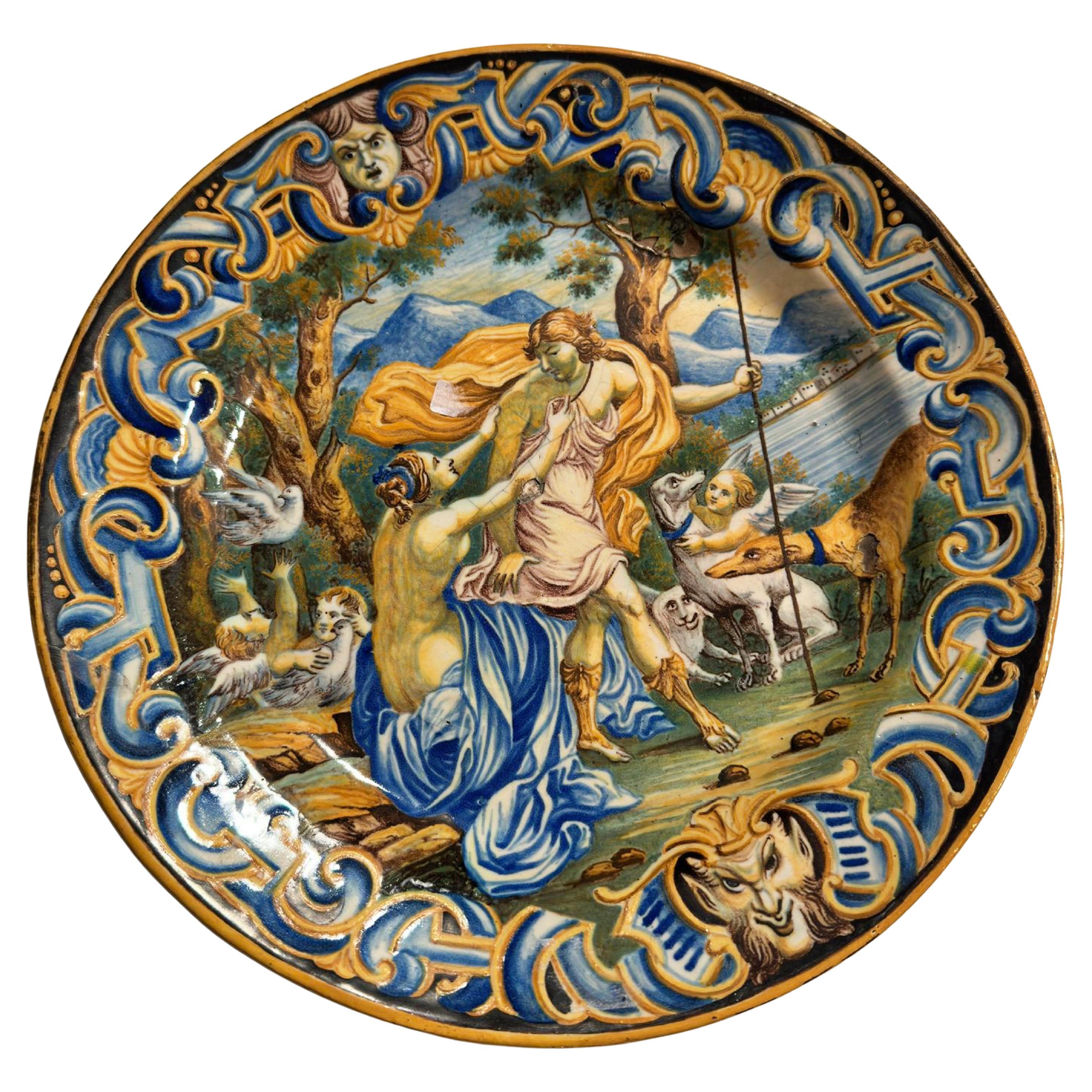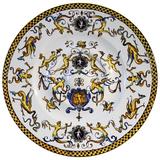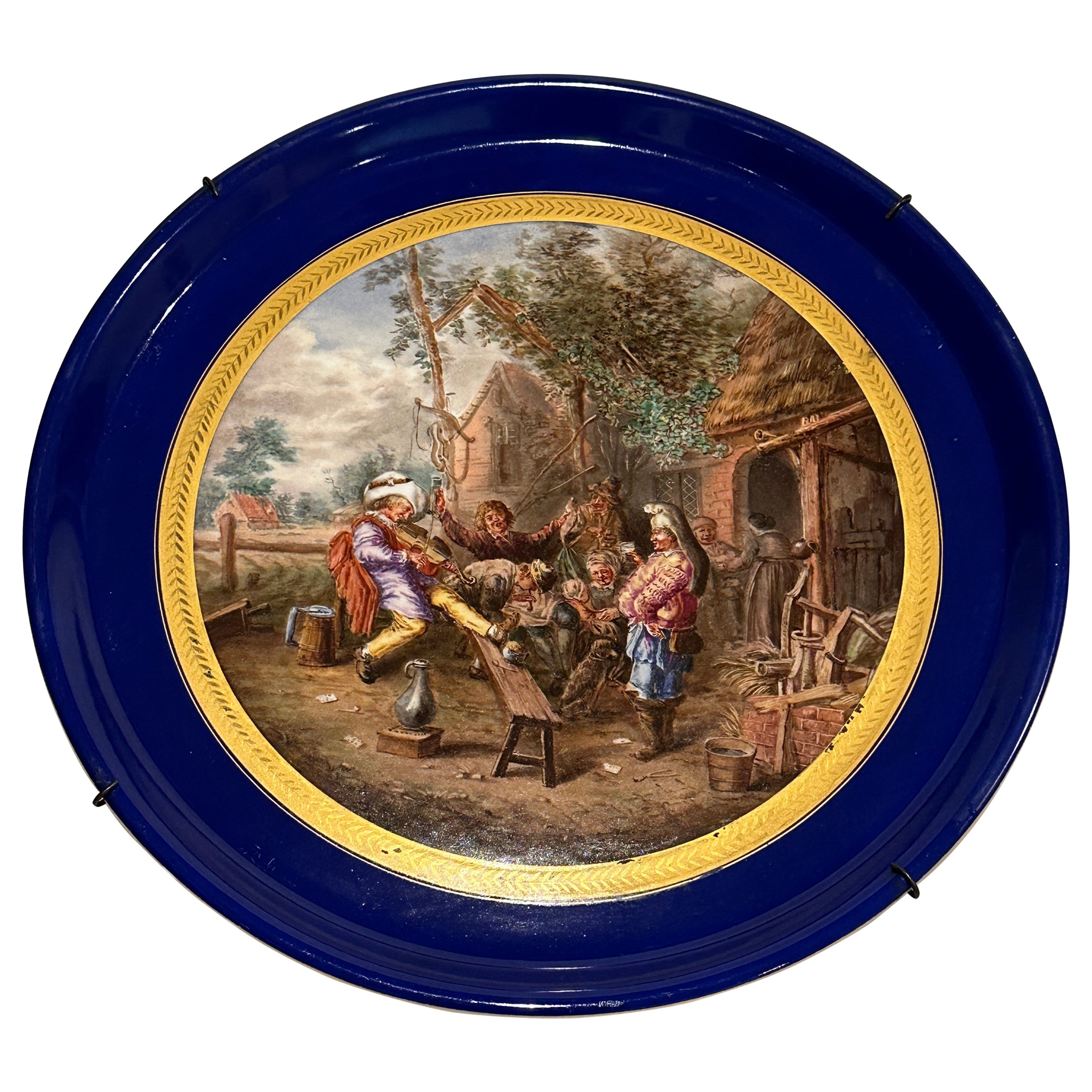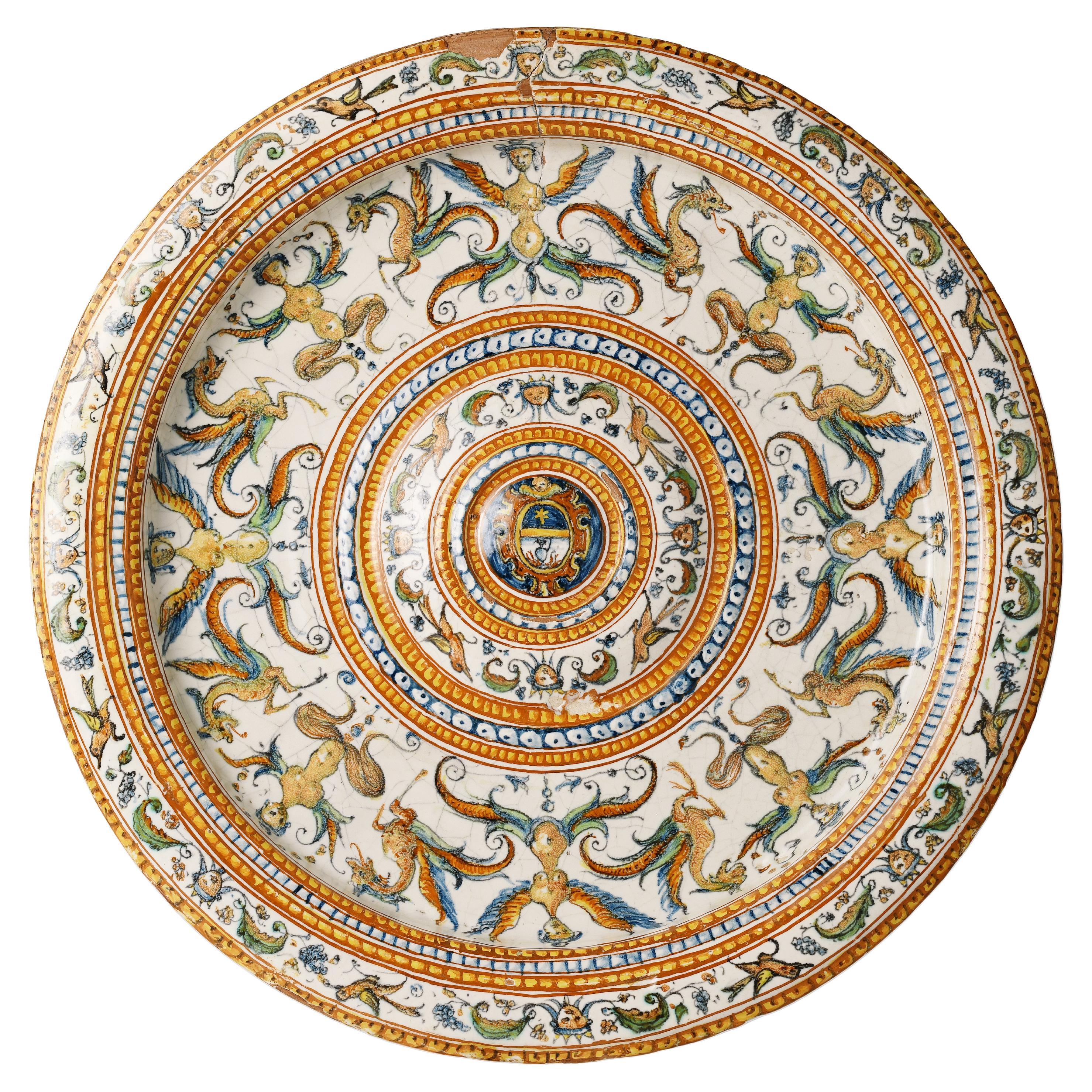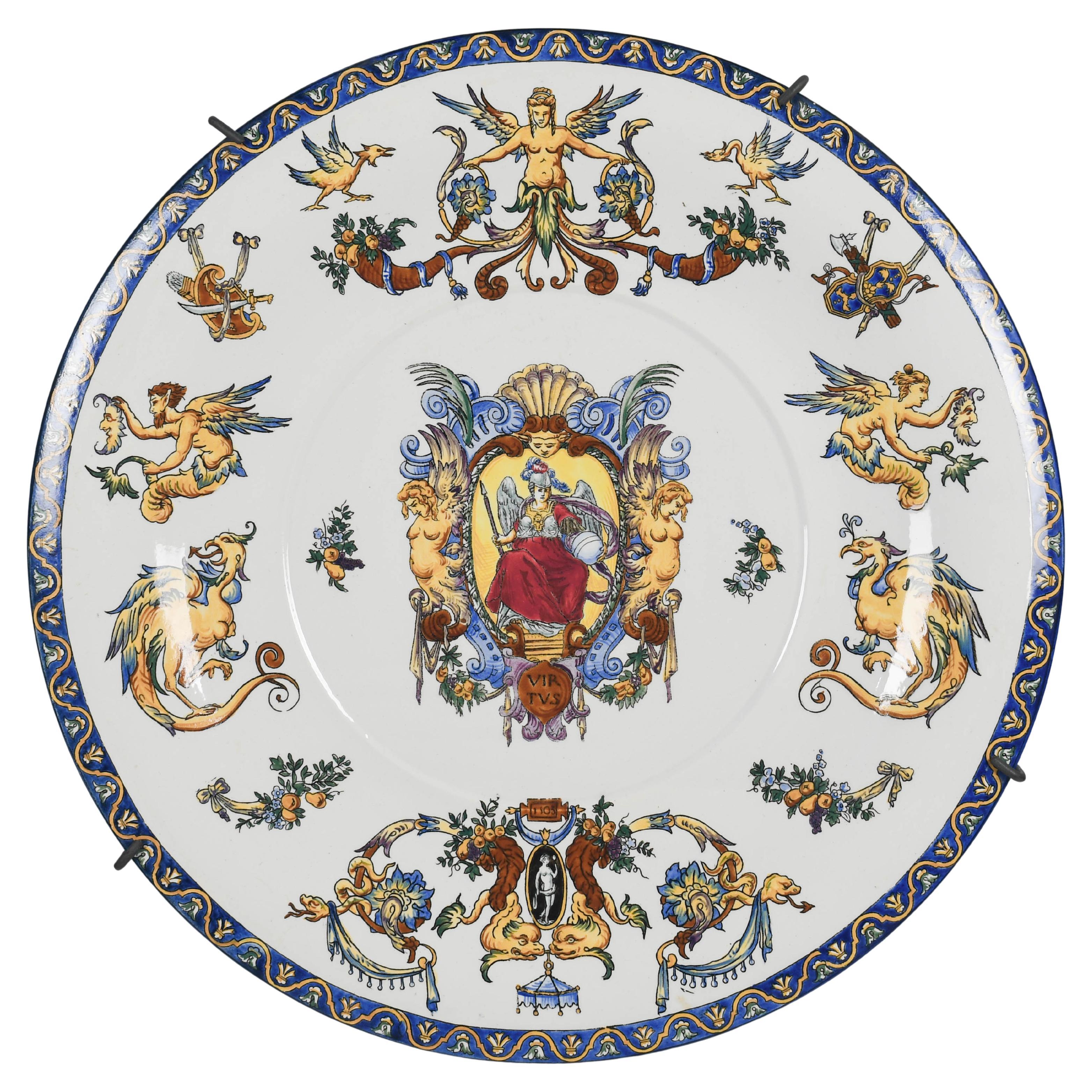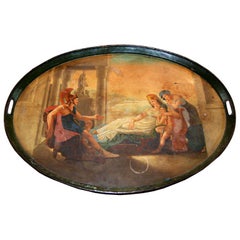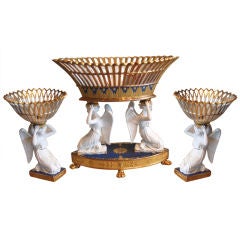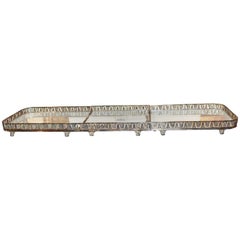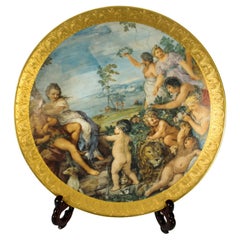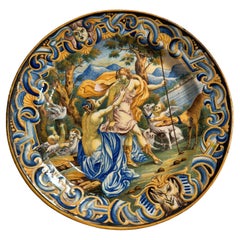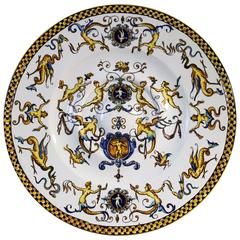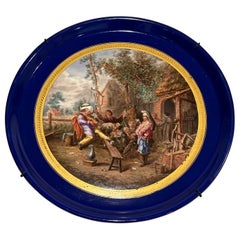Items Similar to Large 19th c. Faiance Charger
Want more images or videos?
Request additional images or videos from the seller
1 of 5
Large 19th c. Faiance Charger
$2,800
£2,106.27
€2,440.02
CA$3,947.42
A$4,389.79
CHF 2,303.63
MX$53,531.44
NOK 29,118.69
SEK 27,299.93
DKK 18,212
About the Item
Beautifully decorated Faiance Charger
- Dimensions:Height: 24 in (60.96 cm)Diameter: 24 in (60.96 cm)
- Materials and Techniques:
- Place of Origin:
- Period:
- Date of Manufacture:19th
- Condition:minor losses.
- Seller Location:New Orleans, LA
- Reference Number:Seller: 35-241stDibs: U12010478681343
About the Seller
5.0
Vetted Professional Seller
Every seller passes strict standards for authenticity and reliability
Established in 1995
1stDibs seller since 2004
75 sales on 1stDibs
Typical response time: <1 hour
- ShippingRetrieving quote...Shipping from: New Orleans, LA
- Return Policy
Authenticity Guarantee
In the unlikely event there’s an issue with an item’s authenticity, contact us within 1 year for a full refund. DetailsMoney-Back Guarantee
If your item is not as described, is damaged in transit, or does not arrive, contact us within 7 days for a full refund. Details24-Hour Cancellation
You have a 24-hour grace period in which to reconsider your purchase, with no questions asked.Vetted Professional Sellers
Our world-class sellers must adhere to strict standards for service and quality, maintaining the integrity of our listings.Price-Match Guarantee
If you find that a seller listed the same item for a lower price elsewhere, we’ll match it.Trusted Global Delivery
Our best-in-class carrier network provides specialized shipping options worldwide, including custom delivery.More From This Seller
View All19th c. Signed Tole Tray
Located in New Orleans, LA
Beautifully painted signed tole tray
Sougue-1884
Sougue-1884
Category
Antique 19th Century French Bowls and Baskets
Materials
Tôle
$10,500
Important Empire Grand Centerpiece
Located in New Orleans, LA
Three-piece neoclassical Paris porcelain surtout de table.
Category
Antique 19th Century French Centerpieces
Materials
Porcelain
$32,000 / set
Belle Epoch Silver Plate Surtout De Table
Located in New Orleans, LA
Beautiful three-piece pierced and mirrored centrepiece.
Category
Antique Early 1900s English Centerpieces
Materials
Silver Plate
Empire Sèvres Porcelain Centerpiece
Located in New Orleans, LA
Fabulous Empire porcelain centerpiece.
Category
Antique 19th Century French Empire Centerpieces
Materials
Porcelain
Beautiful Empire Sevres Urn
Located in New Orleans, LA
Sevres Porcelain and Bronze Urn Depicting the Campaigns of Napoleon I
Category
Antique 19th Century French Vases
Materials
Bronze
$24,000
Wonderful Fire Pot for Those Long Winter Nights
Located in New Orleans, LA
Leather and copper studded fire pot/foot warmer. Originally used under the dining table as a foot warmer.
Category
Antique Mid-19th Century French French Provincial Fireplace Tools and Ch...
Materials
Copper
You May Also Like
Vintage Italian Porcelain Charger Mid 20th Century
Located in London, GB
This is a beautiful huge vintage Italian porcelain charger, Circa 1950 in date.
This colourful and decorative scene depicts a group of mai...
Category
Vintage 1950s Italian Porcelain
Materials
Porcelain, Hardwood
Beautiful Italian Ceramics Plate from the 19th Century " Mythological Scene "
Located in Madrid, ES
Beautiful Italian Ceramics Plate from the 19th Century
Plate with large fire decoration in the center of a mythological scene and on the side a frieze of interlacing, mask, grotesque...
Category
Antique 19th Century Italian Baroque Ceramics
Materials
Ceramic
19th Century French Faience Charger or Plate
Located in Hamilton, Ontario
19th century French faience charger or plate with Gien mark.
Category
Antique 19th Century French Decorative Dishes and Vide-Poche
Large Sèvres-style Porcelain Charger
By Manufacture Nationale de Sèvres
Located in Norwood, NJ
This large French porcelain charger, in the Sèvres style, is intricately painted with a period courtyard scene, set in the yard of a house with family gat...
Category
Antique Late 19th Century French Porcelain
Materials
Porcelain
Italian Renaissance Plate, Patanazzi Workshop Urbino, End of 16th Century
By Patanazzi Workshop
Located in Milano, IT
Acquareccia plate
Patanazzi workshop
Urbino, last quarter of the 16th century
It measures diameter 17.12 in; foot diameter 11.53 in; height 1.88 in (43.5 cm; 29.3 cm; 4.8 cm).
Weight
State of conservation: wear and a few small minimal detachments of enamel, chipping on the raised areas, peeling of enamel at the brim on the back.
This large, shallow basin is equipped with a wide and convex well. It is umbonate with a contoured center. The brim, short and flat, is enclosed in a double rounded and barely raised edge. The basin has a flat base without rims; it has a slightly concave center in correspondence to the well.
The shape takes inspiration from the basins associated with the metal forged amphora pourers that traditionally adorned the credenza. These were used from the Middle Ages to wash hands during banquets. Two or three people washed their hands in the same basin and it was considered an honor to wash one’s hands with an illustrious person.
The decoration is arranged in concentric bands with, in the center of the umbo, an unidentified shield on a blue background: an oval banded in gold with a blue head, a gold star and a field with a burning pitcher.
Rings of faux pods separate the center from a series of grotesque motifs of small birds and masks. These go around the basin and are, in fact, faithfully repeated on the brim. The main decoration develops inside the flounce of the basin, which sees alternating symmetrical figures of winged harpies and chimeras. The ornamentation, outlined in orange, green and blue, stands out against the white enamel background.
This decorative style, defined since the Renaissance as “grottesche” or “raffaellesche”, refers to the decorations introduced after the discovery of the paintings of the Domus Aurea towards the end of the fifteenth century. The discovery of Nero's palace, buried inside Colle Oppio by damnatio memoriae, occurred by chance when a young Roman, in 1480, fell into a large crack which had opened in the ground on the hill, thus finding himself in a cave with walls covered with painted figures.
The great artists present in the papal city, including Pinturicchio, Ghirlandaio, Raffaello, immediately visited these caves. The decorations found there soon became a decorative subject of immense success: the term grotesque , with the meaning of “unusual,” “caricatured,” or “monstrous,” was later commented by Vasari in 1550 as “una spezie di pittura licenziose e ridicole molto”( “a very licentious and ridiculous kind of painting”).
The decorations “a grottesche” also widely circulated in ceramic factories, through the use of engravings, variously interpreted according to the creativity of the artists or the requests of the client.
Our basin is reflected in similar artifacts produced at the end of the sixteenth century by the factories of the Urbino district. See the series of basins preserved in the main French museums, among which the closest in morphology is that of the Campana collection of the Louvre (Inv. OA1496); this however has a more complex figure decoration, while the decoration of our specimen is sober and with a watercolor style.
The style, sure in its execution, approaches decorative results still close to the works produced around the middle of the sixteenth century by the Fontana workshop. The decoration is closely linked to their taste, which later finds its natural outlet, through the work of Antonio, also in the Patanazzi workshop. Studies show the contiguity between the two workshops due to the kinship and collaboration between the masters Orazio Fontana and Antonio Patanazzi, both trained in the workshop of Guido Fontana il Durantino. It is therefore almost natural that their works, often created according to similar typologies and under the aegis of the same commissions, are not always easily distinguishable, so much so that the presence of historiated or “grottesche” works by Orazio is documented and preserved in Antonio Patanazzi's workshop. Given that the studies have always emphasized the collaboration between several hands in the context of the shops, it is known that the most ancient “grottesche” works thus far known, can be dated from 1560, when the Fontana shop created the so-called Servizio Spagnolo (Spanish Service) and how, from that moment on, this ornamentation became one of the most requested by high-ranking clients. We remember the works created for the Granduchi di Toscana, when Flaminio Fontana along with his uncle Orazio supplied ceramics to Florence, and, later, other commissions of considerable importance: those for the service of the Duchi d’Este or for the Messina Farmacia of Roccavaldina, associated with the Patanazzi workshop when, now after 1580, Antonio Patanazzi began to sign his own work.
Thus, in our basin, the presence of masks hanging from garlands, a theme of more ancient memory, is associated in the work with more advanced stylistic motifs, such as the hatching of the chimeras and harpies. These are found here on the front with the wings painted in two ornate ways. In addition, the theme of the birds on the edge completes the decoration along the thin brim and can be seen as representing an early style typical of the Urbino district during a period of activity and collaboration between the two workshops. Later, a more “doll-like” decorative choice, typical of the end of the century and the beginning of the seventeenth century, characterized the period of the Patanazzi workshop under the direction of Francesco.
Bibliography:
Philippe Morel, Il funzionamento simbolico e la critica delle grottesche nella seconda metà del Cinquecento, in: Marcello Fagiolo, (a cura di), Roma e...
Category
Antique 16th Century Italian Renaissance Ceramics
Materials
Maiolica
19th Century French Gien Faience Platter
By Gien
Located in Winter Park, FL
A 19th century French Gien faience decorative charger or shallow bowl, hand-painted in red, orange, yellow, blue, and green on white ground with Renaissance style imagery with a cent...
Category
Antique 19th Century French Renaissance Delft and Faience
Materials
Faience
More Ways To Browse
Travertine Cake Stand
Wilcox Serving Tray
Wood And Sons Platter
19th Century Spanish Charger
Adams And Bromley
Antique Cheese Molds
Antique Rs Prussia
Meat Drainer
Minton Transferware
Minton Willow
Oak And Silver Tray Gallery
Oneida Silver Tray
Pressed Glass Cake Stand
Silver Revolving Dish
Staffordshire Black Transferware
Vintage Johnson Bros England
Webster Wilcox
Celadon Platter
